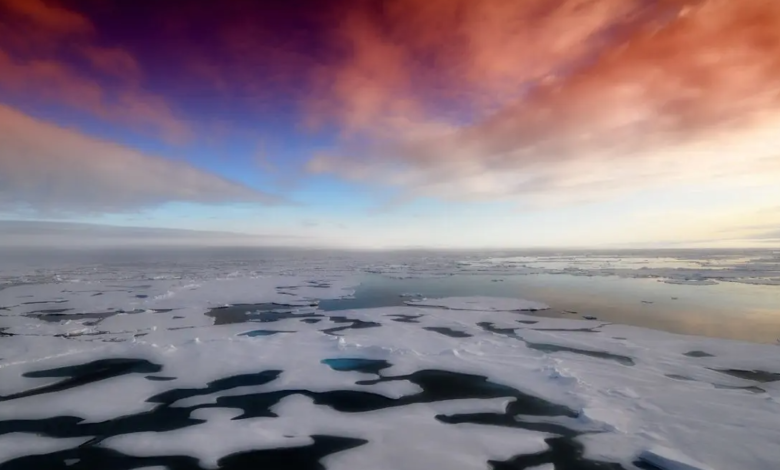Farewell to Arctic sea ice, by 2050 North Pole without cap in summer

Italian study sheds light on Arctic sea ice reaction times
(sustainabilityenvironment.com) – Does the Arctic sea ice have a point of no return? What climatic conditions can lead to a rapid disappearance of the North Pole shell? At what speed will this change take place? Climate science still has no clear answer to these crucial questions. But on the last one, an extra piece comes from a recent study in which the CNR-Isac and the Institute of Polar Italian Sciences collaborated.
Arctic sea ice may react quickly to climate change. Even instantaneously, or at most with a delay of about 10 years. This is what happened in the past, it reconstructs the study published in Pnas. More precisely, between 36 and 44 thousand years ago.
“The work combines two records of sea ice: the first obtained through the analysis of marine salts (bromine and sodium) present in a glacial core extracted in northwest Greenland; the second based on the association of bio-markers present in a carrot of marine sediment taken in the Labrador Sea“, explains Federico Scoto of CNR–Isac, who led the study.
Read also Artic Ocean acidification is 4 times faster than in other seas
“The results show that, between the sub-polar regions of Baffin Bay and the Labrador Sea, the reaction time of sea ice, following a sharp rise in temperatures in Greenland, is almost synchronous, instantaneous or occurs within a decade, Moving from a long-lasting thick cover to open sea conditions and seasonal ice,” adds Scoto.
Why is it important to clarify the timing and mode of reaction of Arctic sea ice to changing temperatures? “Climate cycles known as Dansgaard-Oeschger (D-O) events are characterized by an increase in atmospheric temperatures in Greenland up to +15 ºC in a few decades, followed by a progressive cooling that can last up to 1-2 thousand years,” explains Carlo Barbante, director of the CNR-ISP and co-author of the study. “Although some hypotheses link these oscillations to the change in sea ice cover in the Arctic, the dynamics and temporal link of the two processes were not entirely clear. This study sheds light on these aspects and confirms the importance of studying the climatic variations of the past to better understand the present and develop models for the future“.
If this dynamic is applied to the Arctic, data on the melting of the ice cap in the last decades in less than 30 years could make the North Pole completely ice free during the summer season.





